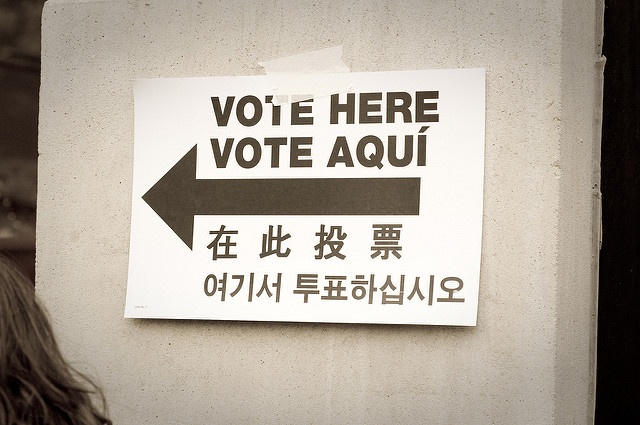INSTITUTE INDEX: Can a diversifying electorate reshape Southern politics?

An increasingly diverse electorate has the potential to alter the South's political landscape. (Photo by John Morton via Flickr.)
Rank of this year's U.S. electorate among the most diverse ever: 1
Percent of voters on Election Day who will be Hispanic, black, Asian or another racial or ethnic minority: 31
Percentage points by which that number grew since 2012: 2
Total percent increase in eligible U.S. voters from 2012 to 2016: 5
In white voters: 2
In black, Asian and Hispanic voters, respectively: 6, 16, 17
Percent of the U.S. population under the age of 18: less than 25
Percent of the Latino population in the South that's under 18: 32
Percent of those Southern Latino youth who are citizens, meaning they will eventually be eligible to vote: more than 90
Factor by which the number of Latino or Hispanic residents of South Carolina has increased since 2000: nearly 3
Of the four majority-minority states today, number in the South: 1*
Decade in which Florida and Georgia are expected to join the majority-minority ranks: 2020s
Decade in which Louisiana is expected to do so: 2030s
Decade in which Mississippi and Virginia are expected to become majority-minority: 2040s
Decade in which North Carolina will likely join them: 2050s
Year in which the turnout for black voters in the U.S. surpassed that of white voters for the first time: 2012
Percentage points by which eligible voters of color increased in North Carolina between 2012 and 2016: 2
If this year's Democratic presidential candidate were to win the same level of support from North Carolina's voters of colors as in 2012, when President Obama narrowly lost the state, net points Democrats would pick up, flipping the state back in their favor: 2.3
Percent of votes that, if cast by North Carolina's white voters for Republicans this year at the same level of support the party received in 2004, would mean Democrats couldn't win: 73
* Texas
(Click on figure to go to source.)
Tags
Sue Sturgis
Sue is the former editorial director of Facing South and the Institute for Southern Studies.
